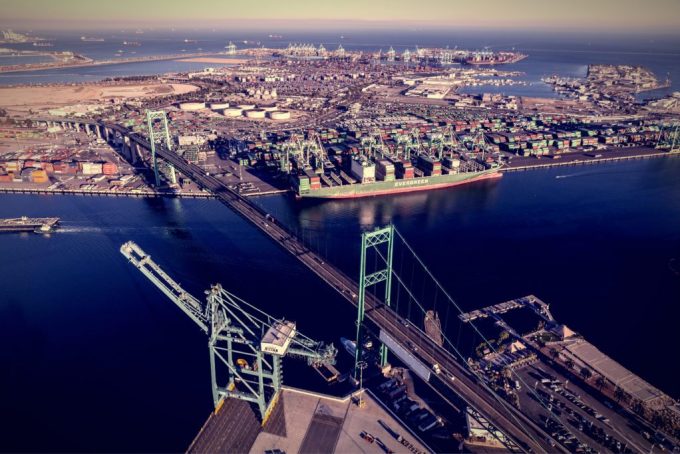Overtime ban at port of Montreal goes on as 'special mediator' is rejected
Canadian shipping stakeholder hopes of a prompt resolution of the dispute at the port of ...
GM: RAISING THE ROOF GGM: IN FULL THROTTLE GZIM: MAERSK BOOST KNIN: READ-ACROSSMAERSK: NOT ENOUGHMAERSK: GUIDANCE UPGRADEZIM: ROLLERCOASTERCAT: HEAVY DUTYMAERSK: CATCHING UP PG: DESTOCKING PATTERNSPG: HEALTH CHECKWTC: THE FALLGXO: DEFENSIVE FWRD: RALLYING ON TAKEOVER TALKODFL: STEADY YIELDVW: NEW MODEL NEEDEDWTC: TAKING PROFIT
GM: RAISING THE ROOF GGM: IN FULL THROTTLE GZIM: MAERSK BOOST KNIN: READ-ACROSSMAERSK: NOT ENOUGHMAERSK: GUIDANCE UPGRADEZIM: ROLLERCOASTERCAT: HEAVY DUTYMAERSK: CATCHING UP PG: DESTOCKING PATTERNSPG: HEALTH CHECKWTC: THE FALLGXO: DEFENSIVE FWRD: RALLYING ON TAKEOVER TALKODFL: STEADY YIELDVW: NEW MODEL NEEDEDWTC: TAKING PROFIT

Following last week’s approval of a new collective labour agreement between US west coast dockworker members of the ILWU and terminal employers, represented by the Pacific Maritime Association (PMA), supply chain execs tasked with avoiding congestion at North American container gateways will now turn their thoughts to the US east and Gulf coasts.
The ILWU confirmed that the new contract was ratified by 75% of its membership in a vote late last week – the new contract is retroactive to the expiry of its predecessor on 1 July 2022 and will run until 1 July 2028.
“This contract provides an important framework for the hard work ahead to overcome new competitive challenges and to continue to position the west coast ports as destinations of choice for shippers worldwide,” said PMA president and CEO Jim McKenna, “and our interests are aligned in ensuring they can effectively, and efficiently, handle the capacity growth that drives economies and jobs.’’
Meanwhile, the International Longshoreman’s Association (ILA), representing over 80,000 dockers in east and Gulf coast ports, has indicated it is preparing to begin negotiations with employer the US Maritime Alliance (USMX) for the renewal of their collective bargaining agreement, due to expire on 30 September 2024.
ILA president Harold Daggett used his Labour Day address to members on 1 September to indicate the union was likely to approach the talks with its traditional belligerence. H said: “The ILA is pledging solidarity and support to fight all enemies who look to take our jobs and our livelihoods from us.
“Whether it is the threat of automation, over-reaching government regulations or other so-called “unions” infringing on our jurisdiction, the ILA is committed to commit the needed resources to combat our enemies.”
However, overall container trade capacity into the US east and Gulf coast ex-Asia has already been somewhat curtailed after the Panama Canal introduced transit restrictions in response to low water levels, which are expected to be in place for 10 months.
But soft demand and easing of conditions in west coast ports ought to mitigate these challenges, recent analysis from Freightos suggested. It added: “Low-water restrictions will likely stay in place for at least ten months, though there has not been any significant impact on container shipping via the canal yet.
“With alternatives and excess capacity in the market, it is looking unlikely that these restrictions will cause much disruption to container trade.”
Comment on this article